Menu
PRESS RELEASE
Boise, Idaho – July 1, 2025 – Forge Building Company, a leading innovator in reliable, high-performance steel building systems, has been named a 2025 Best of Business winner by Inside Self-Storage (ISS) readers. The company was honored in the category of Best Roofing Company.
In addition, two of its most recent projects completed for U-Haul in Meridian, Idaho, and StorTropolis in Olathe, Kansas, were selected for the ISS 2025 Facility-Design Showcase. A gallery of innovative, inspiring projects that showcase the latest industry trends. This distinction highlights industry properties, showcasing creative architecture and innovative building methods. These include materials, signage, curb appeal, and other design elements. The images showcase an assortment of styles and features that can be found at dozens of locations worldwide.
Each year since 2011, Inside Self-Storage has conducted its Best of Business reader-choice poll, inviting self-storage professionals around the world to vote for the industry’s top suppliers and service providers across 40 categories.

“We’re honored to be recognized among the best of the self-storage industry by Inside Self-Storage,” said Hamish Bell, President of Forge Building Company.
“The Best of Business award highlights and underscores our unwavering commitment to delivering durable, high-quality roofing systems for all of the projects we build. With our roll-forming and standing seam roofs, we extend the life of our clients' investment, provide potential capital improvement tax benefits, and protect their tenants' belongings. We always encourage our clients to look up and secure the future success of their facility by investing in a reliable and resilient roof. Additionally, it is an honor to see two of our projects being showcased for their design, building methods, materials, and other design elements.”
About Inside Self-Storage
For over 34 years, Inside Self-Storage has served as a trusted resource for the self-storage industry. Its educational offerings include ISS Magazine, the annual ISS World Expo, an extensive website, the ISS Store, and Self-Storage Talk, the industry’s largest online community.
For more information, please visit https://www.insideselfstorage.com
About Forge Building Company
Founded in 2007 by industry veterans Hamish Bell and Hayden Farrell, Forge Building Company has become a leading nationwide expert and provider of comprehensive steel building solutions. The company specializes in customized, value-engineered building solutions for self-storage and other commercial applications. With over two decades of experience and a portfolio exceeding 500 projects and 50 million square feet of construction, Forge Building Company remains privately owned and headquartered in Boise, Idaho.

The construction industry is currently navigating a complex and dynamic landscape. Several factors are contributing to its unique state; however, it is still poised for growth. Developers and contractors are working through the challenges, illustrating tenacity and determination to see projects completed. Construction continues to move forward, even when obstacles exist.
The construction industry experienced significant growth in 2023 and 2024. This growth was attributed to a rebound effect from the downward turn during the pandemic. There has been a slowdown in 2025; however, there is still momentum, and several non-residential sectors are poised for growth. Specifically, institutional sectors are projected to have a 6% gain in 2025.
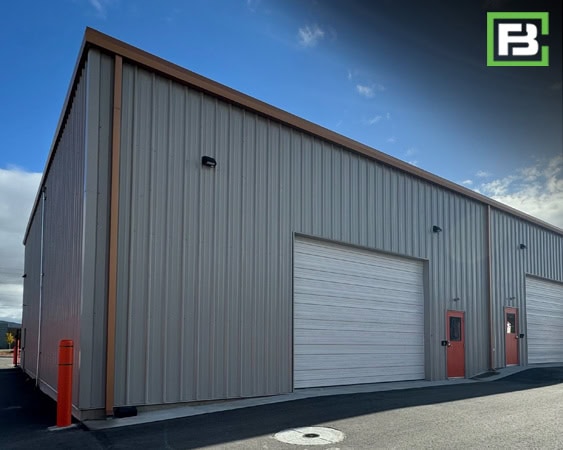 For 2025, the 1 American Institute of Architects (AIA) projects that there will be a modest increase of 2.2% in non-residential construction. This is a slower rate of growth than what has been seen in previous years; however, there was an unprecedented rebound in construction activity post-COVID. 2 The Construction Confidence Index (CCI) for April rose to 61, marking a 6-point increase from the previous month. The CCI is a metric that is used in a survey completed by Associated Builders and Contractors (ABC). When the index is above 50, it indicates optimism amongst the contractors; when it dips below 50, it is a pessimistic outlook. Despite tariff impacts, contractors’ expectations for the next 6 months are optimistic with a strong backlog. The backlog for April rose to 8.7 months, the highest level in 20 months. The southern states have the lengthiest backlog of 10.3 months, which is a good indicator of where the development growth is occurring in the nation.
For 2025, the 1 American Institute of Architects (AIA) projects that there will be a modest increase of 2.2% in non-residential construction. This is a slower rate of growth than what has been seen in previous years; however, there was an unprecedented rebound in construction activity post-COVID. 2 The Construction Confidence Index (CCI) for April rose to 61, marking a 6-point increase from the previous month. The CCI is a metric that is used in a survey completed by Associated Builders and Contractors (ABC). When the index is above 50, it indicates optimism amongst the contractors; when it dips below 50, it is a pessimistic outlook. Despite tariff impacts, contractors’ expectations for the next 6 months are optimistic with a strong backlog. The backlog for April rose to 8.7 months, the highest level in 20 months. The southern states have the lengthiest backlog of 10.3 months, which is a good indicator of where the development growth is occurring in the nation.
With the tariffs and higher interest rates, many investors are in a “wait and see” state, which is creating an excellent advantage for those who don’t want to sit on the fence. While others are waiting and navigating potential risks, it presents opportunities for those who decide to move forward with their projects. This allows for less competition for land purchases and shorter timeframes to get jurisdiction approvals. Also, when less development occurs in specific construction sectors, this creates a space for competitive pricing from contractors eager to keep their backlogs comfortable. Furthermore, many manufacturers hedged against the increased cost of steel with tariffs, purchasing steel coils at a lower cost. With this, it is even more critical to ensure that a project moves forward with this inventory and not the next supply order, which could be at a higher price.
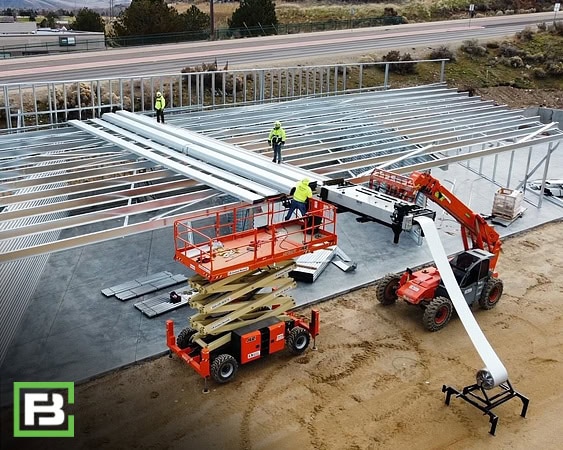 Beyond the increased cost of materials due to tariffs and the unattractive interest rates, the construction industry also faces a labor shortage. This remains a critical issue for contractors nationwide. 6 ABC’s Chief Economist, Anirban Basu, shares, “While the construction workforce has become younger and more plentiful in recent years, the industry still must attract 439,000 new workers in 2025 to balance demand and supply.” The main factors contributing to the shortage in labor are an aging workforce moving into retirement, immigration policies, and the perception of trades. This labor shortage directly impacts construction projects with schedule delays, increased cost of labor due to low supply, and safety concerns with overworked crews. 7 It is projected that there will be an even greater need for labor in 2026 as interest rates are anticipated to fall, increasing construction development projects.
Beyond the increased cost of materials due to tariffs and the unattractive interest rates, the construction industry also faces a labor shortage. This remains a critical issue for contractors nationwide. 6 ABC’s Chief Economist, Anirban Basu, shares, “While the construction workforce has become younger and more plentiful in recent years, the industry still must attract 439,000 new workers in 2025 to balance demand and supply.” The main factors contributing to the shortage in labor are an aging workforce moving into retirement, immigration policies, and the perception of trades. This labor shortage directly impacts construction projects with schedule delays, increased cost of labor due to low supply, and safety concerns with overworked crews. 7 It is projected that there will be an even greater need for labor in 2026 as interest rates are anticipated to fall, increasing construction development projects.
3 The self storage industry is experiencing a peak in supply, with construction completions forecasted to add 54 million square feet of storage in 2025. For 2026, the new self storage supply is projected to be 20% less than this year. Despite this, several markets are still seeing a continued increase in new or expanding self storage facilities. These trends typically follow the growth trends of people moving or “migrating” to specific markets. With several markets facing an oversupply of self storage, many investors are pivoting to an asset class that is similar, flex space.
4 There is an unprecedented demand for small-bay flex space. The combination of limited supply, increasing demand, and strategic locations makes this segment very attractive to investors and developers. This type of real estate appeals to small and mid-sized companies, such as contractor trades, light manufacturing, automotive services, fitness studios, small retailers, and wholesalers. Small-bay flex units typically range from 1,500 SF to 10,000 SF. The tenants who rent these spaces are not looking for a large commercial warehouse but need space to conduct business.
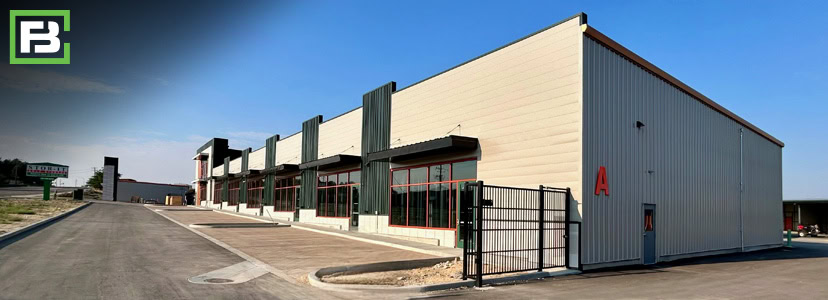
Despite current industry challenges, Forge Building Company is well-positioned to respond with strength and expertise. Its steel building packages for development projects remain competitively priced, supported by a dependable network of skilled installation crews that help mitigate schedule delays. With specialized knowledge in both self storage and flex space, Forge can value-engineer projects to keep development costs in check. While some investors adopt a cautious “wait and see” approach, others are seizing the moment, proving the adage true: When others wait, builders gain.
Contributing Editor: Melissa Anderson, Forge Building Company
References:
1 https://www.aia.org/about-aia/press/softness-construction-spending-predicted-through-2026-consensus-construction
2 https://www.abc.org/News-Media/News-Releases/despite-tariff-impacts-abc-contractors-backlog-and-profit-margin-expectations-improve-in-april
3 https://www.multihousingnews.com/top-emerging-self-storage-markets/
4 https://www.globest.com/2025/04/07/small-bay-industrial-emerges-as-attractive-investment-amid-e-commerce-boom
5 https://personalwarehouse.com/small-bay-industrial-trends-micro-flex-market-booming-2025
6 https://www.abc.org/News-Media/News-Releases/abc-construction-industry-must-attract-439000-workers-in-2025
7 https://www.enr.com/articles/60213-construction-needs-over-439-000-new-workers-in-2025-says-abc
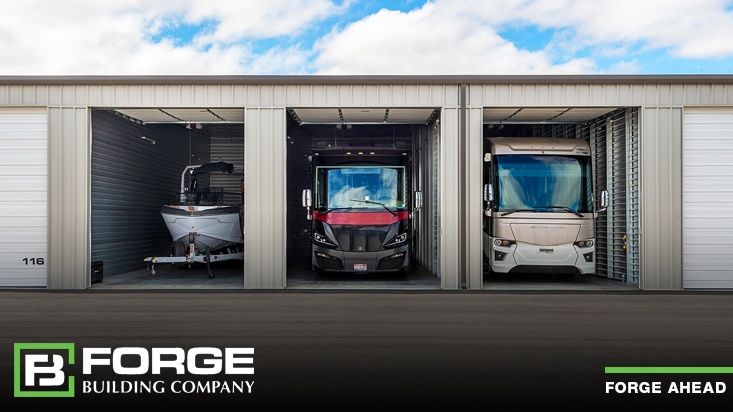
With the rapidly growing market for boats, RVs, classic cars, and other “toys,” developing or Investing in Storage Condominiums can be lucrative for both the investor and buyer of the individual units. These types of storage units appreciate in value due to the low supply and high demand, allowing owners to capture a full return on investment and more. Plus, there are many tax breaks because it is commercial real estate.1
A storage condo, like it sounds, is much like a residential condo except it is a storage unit that you own. These units are designed primarily for the rapidly growing market for boats and RVs (see our blog https://forgebuildings.com/where-is-boat-rv-storage-headed/), but can also be used to store items like classic cars, business inventory, and more. Each storage condo unit is part of a storage complex that has some shared amenities for which owners typically pay monthly dues to maintain in a similar manner as a traditional Homeowners Association.
 While these types of condos share the same basic purpose as other storage units, condo-style vehicle storage differs in significant ways from the standard rental model. First, vehicle-storage condos share many characteristics with office-warehouse or flex condos, including high and wide doors, high ceilings, wide aisles between buildings, climate control, and security features. They may also be in an industrial park or on land zoned for light industry. A big difference is that the storage condo complexes usually offer services specific to boats and RVs, such as dump stations, wash stations, maintenance, and repair.
While these types of condos share the same basic purpose as other storage units, condo-style vehicle storage differs in significant ways from the standard rental model. First, vehicle-storage condos share many characteristics with office-warehouse or flex condos, including high and wide doors, high ceilings, wide aisles between buildings, climate control, and security features. They may also be in an industrial park or on land zoned for light industry. A big difference is that the storage condo complexes usually offer services specific to boats and RVs, such as dump stations, wash stations, maintenance, and repair.
Irrespective of market conditions, storage condos appeal to buyers and developers for a variety of reasons:2
In today’s market, most storage condominium units range in cost from $55,000 to $200,000.4 They sell for around $125 to $150 per square foot. In addition, owners can expect to pay $30 or more each month for maintenance fees such as snow removal and lawn care. Also, like other real estate properties, the storage condo is also subject to local property taxes.3
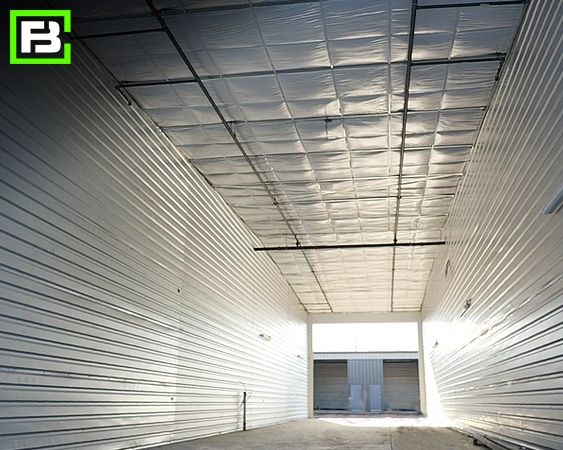 How large are they?
How large are they?Storage condos are built primarily with the owners of large RVs, boats, and classic cars in mind. They typically range between 35 to 50 feet in depth and 10 to 25 feet in width. They also typically have 14-foot-high ceilings. The average storage condo covers about 600 square feet in total.
Because owners typically store their boats, RVs, and classic cars storage condos are usually very well-insulated, climate-controlled, and outfitted with electrical service. They also usually offer dump stations and wash areas for RVs, along with 24-hour access, and enhanced security features (due to the cost of the boats and RVs being stored).
There are many factors to indicate that the storage condo business is worth the investment, including local market conditions. Many areas of the country lack vehicle storage or places where boats and RVs can be stored securely. Limited inventory equals a great investment opportunity for both the developer and buyer of the individual unit.
There are currently over 25,000,000 boat and RV owners with another 9,000,000 expected to join the market in the next 3 years. Economic and social trends indicate that this is likely to continue throughout this year and beyond. As the sales of RVs and boats increase, the demand to store these vehicles is also likely to grow. Traditional self storage facilities have limited space and amenities to store RVs and boats, which means that demand for RV/boat condos will likely grow as RV and boat sales rise.
Owners of other types of vehicles, such as collectible and antique cars, motorcycles, and commercial vehicles, may also be in the market for storage condos. Owners of all these vehicle types will not only want a unit for storage, but for maintenance and light repairs as well – a secure place where they can pursue their hobby.
Want to know more about investing in storage condominiums ? Check out our latest video with LuxeLocker to learn more about the Storage Condominium market and why they chose to work with Forge Building Company. Then let’s connect.

References
1. The Storage Guy. (n.d.). Retrieved from thestorageguy-madison.com: https://thestorageguy-madison.com/storage-condominium-your-home-away-from-home/#:~:text=Storage%20condominiums%20appreciate%20in%20value,the%20value%20of%20a%20property.
2. Stratton, J. (2007, October 1). Inside Self Storage. Retrieved from InsideSelfStorage.com: https://www.insideselfstorage.com/vehicle-storage/entering-storage-condo-market
3. Roberts, D. (2023, August 6). Guide Home Blog. Retrieved from GuideHomeBlog.com: https://guidehomeblog.com/how-much-do-storage-condos-cost/
4. Harris, A. (2020, May 26). SpareFoot Blog. Retrieved from Sparefoot.com: https://www.sparefoot.com/self-storage/blog/23966-what-are-storage-condos/
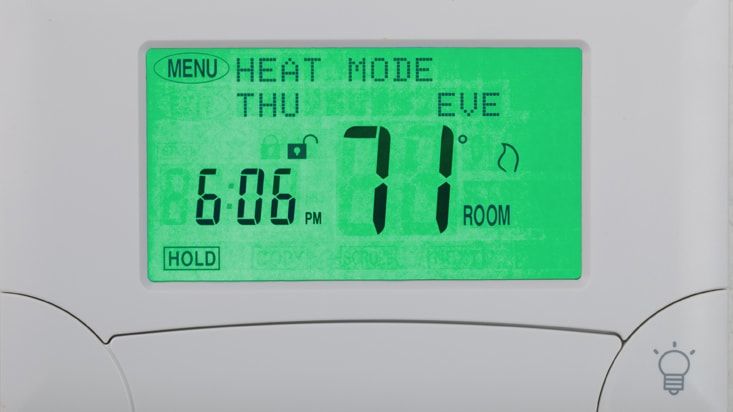
Very few places in the country are fortunate enough to avoid the frigid temperatures of winter, the extreme heat of summer and the humidity that comes with it. For that reason, climate-controlled storage spaces have exploded in popularity, and this is particularly true in areas prone to extreme temperatures or high humidity. Renters storing valuable or irreplaceable items often prefer climate-controlled self storage units due to the high degree of protection and peace of mind they provide.
In 2021, owners of self storage facilities saw extremely high occupancy rates. The average cost of renting a storage unit also surpassed pre-pandemic levels. Self storage business owners saw a shift in terms of the types of storage spaces renters desire, and many are updating their buildings or adding new ones to accommodate them. This is where climate-controlled units come into play.
The need for additional storage space is growing especially rapidly in lower-cost cities as population and migration growth continue to flourish in more affordable areas. In 2020, self storage occupancy rates held steady at around 92%, and self storage market insiders expect this trend to continue well into this year and beyond.1
Owning a climate-controlled storage business is a great investment. Storage business profit margin is up to 11% per year, where the capital-intensive business profit ranges between 3%- 5%.2
Climate-controlled units are also a great way to increase profit because they typically command higher rental rates than traditional space of the same size. The amount of upcharge will vary by region of the country; however, in some markets, this could be 15-35% or more.3 Another huge advantage is that the newest generation of 100% climate-controlled, multi-story buildings enables a developer to build roughly three times the rentable square footage on the same amount of dirt. This means the owner can absorb a much higher land cost. It also allows them to consider many more parcels for a project.4
Building a climate-controlled self storage facility is different from building the traditional ones. There are definitely more unique intricacies. Following are some design considerations.
When it comes to the design of your temperature- or climate-controlled self storage buildings, here are some common items to consider.
Costs. It’s common for commercial steel building developers to phase a project, but when planning a site with climate control, consider how the design will impact construction costs. The most cost-effective building is a large, wide structure.
On average, the cost of building a climate-control self storage is $35-$70 per square foot. It may also cost around $8-10 million for a 2.5 acre landed storage. This figure represents almost all costs, including land, land development, construction, permits, insurance, materials, labor, etc. The actual cost may vary depending upon your location, materials used, type of building, etc. This is simply a rough estimate based on 2021 factors.
A study by Storelocal Storage Coop suggests that when costing out a climate-control build, you also need to factor in the cost of the HVAC mechanical system and the extra insulation you’ll need. This could add, on average, 15% to each square foot or to the total cost when compared to building a non-climate controlled self storage facility.
Heating and Cooling. Depending upon the location of your facility, a facility owner must decide if they are going to offer both heating and cooling (or one or the other). Generally, a climate-controlled facility should maintain building and unit temperatures below 85 degrees in the summer and above 55 degrees in winter, with humidity below 65 percent to prevent mold and mildew.5
Moisture is the biggest design consideration. Split-system HVAC units work well in these situations. When used in conjunction with a dehumidifier, these systems ensure that stored belongings stay dry. Another consideration is to utilize ionizers in lieu of additional “outside air intakes” to help minimize moisture.
Unit access. Climate-controlled buildings are usually built with interior unit access via hallways, but more commercial steel building developers are building climate-controlled units with exterior, drive-up access. Since these units are open to the weather elements, climate-control can be a bit more challenging. Therefore, these units should be equipped with insulated sectional doors (typically R-19 insulating value) rather than traditional roll-up doors. The proper HVAC system can also help overcome these challenges.
Unit size. Interior-access buildings won’t contain units as large as those used for drive-up storage. The largest unit size in these buildings is typically 10-by-20.
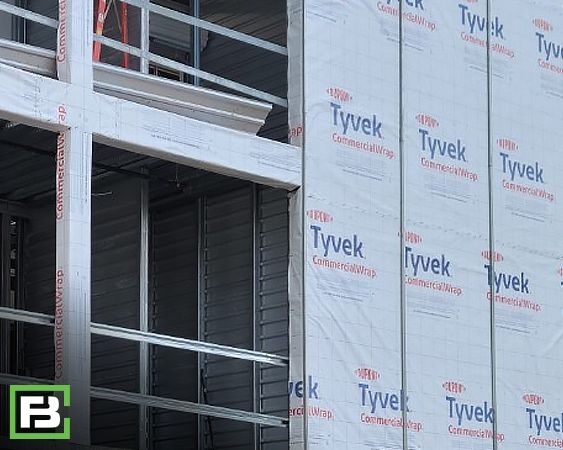 Insulation. How much insulation you need and what kind will vary based on local building codes, weather conditions, and owner preferences. The International
Energy Conservation Council recently changed its guidelines in many areas, requiring more insulation to better preserve energy. This isn’t a bad thing because it can provide facility owners the most cost-effective way to keep temperature and humidity at optimal levels.
Insulation. How much insulation you need and what kind will vary based on local building codes, weather conditions, and owner preferences. The International
Energy Conservation Council recently changed its guidelines in many areas, requiring more insulation to better preserve energy. This isn’t a bad thing because it can provide facility owners the most cost-effective way to keep temperature and humidity at optimal levels.
Inside Self Storage recommends a minimum of 6 inches of fiberglass (R19) for roofs and walls. The building’s heat loss and gain must be determined by the HVAC contractor. This contractor will calculate insulation values, ceiling heights, cubic area, type of construction, amount of lighting, exterior doors, number of windows, and the air infiltration from outside.
Projects can be built with spray-in foam, fiberglass batts, insulated panels or some sort of combination. While building a project with a higher R-value will cost more, it pays benefits in two ways – your operating costs will be lower contributing to a higher property value when it’s time to sell.
Other ways to insulate your facility include:
Roof pitch. You can choose from a variety of roof pitches for climate-controlled buildings. Roofs can be designed to allow room for the desired insulation thickness (R-value) directly under the panels. Or, on higher-pitched buildings, the insulation may be placed directly over the ceiling of the heated/cooled space as you would find in a home, with insulation on the attic floor rather than under the rooftop.
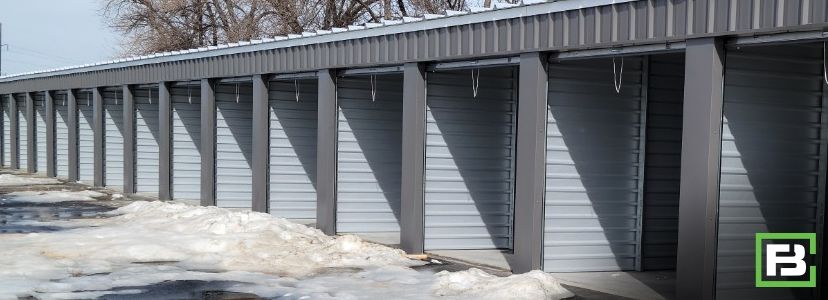
As the self storage industry continues to grow, the large majority of new builds are including climate-control in the mix. And in many markets, self storage sites consist entirely of climate-controlled units.
Climate-controlled units can be an excellent addition to your storage investments since these units command higher rental rates, bring in new clients and generate additional revenue.
Whether you want to add Climate-Controlled Self Storage units to your existing facility or plan to include climate-control in a new build, the team at Forge Building Company will help you design the most cost-effective solution.
Works Cited
1. Regency Steel Buildings. (n.d.). Retrieved from Ministorageoutlet.com: https://ministorageoutlet.com/self-storage-industry-projections/
2. Rider, J. A. (2022, February 20). howmuches.com. Retrieved from How Muches: https://howmuches.com/how-much-does-it-cost-to-build-a-climate-controlled-storage/
3. Statistica. (n.d.). Retrieved from Statistica.com: https://www.statista.com/statistics/1051121/monthly-rent-climate-control-self-storage-unit-sizes-usa/
4. Rowley, A. (2022, April 14). Inside Self Storage. Retrieved from Insideselfstorage.com: https://www.insideselfstorage.com/building-componentsmaterials/building-climate-controlled-self-storage-benefits-and-design
5. Storelocal Storage Coop. (2022, February 23). Retrieved from selfstorage.coop: https://www.selfstorage.coop/blog/considerations-for-a-climate-controlled-storage-facility
There have been many discussions, especially over the last couple of years during the pandemic, about technology and especially contactless technology. However, understanding what all of this means for self storage technology for your business can be daunting.
Implementing the right tools is the best way to grow your business and meet the expectations of your clients. In fact, one could argue that digital strategy has quickly become one of the most significant market differentiators. Following are some options that’ll help you get on the right path.
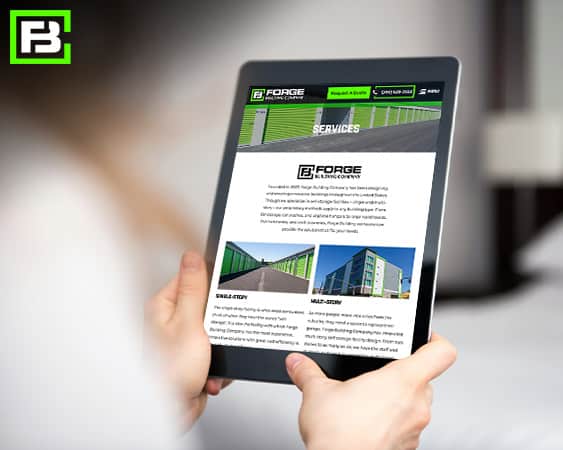 Any discussion about digital technology needs to start with your website. A well-designed and managed website is the cornerstone of all your marketing efforts. A responsive and fast site is indispensable because, at some point, almost every client will interact with it.
Any discussion about digital technology needs to start with your website. A well-designed and managed website is the cornerstone of all your marketing efforts. A responsive and fast site is indispensable because, at some point, almost every client will interact with it.
How your website looks and functions reflects your self-storage business. To the client or potential client, it conveys something about quality. You should hold your website to a high standard of usability and visual appeal, just as you hold your physical property to a high standard of cleanliness and safety. Your website must load quickly and be responsive, meaning it’s just as appealing and usable when viewed on a mobile device as on a desktop computer.
A great bonus to having an attractive, functional website is that you can showcase client reviews, so prospects don’t have to track down your page on Google Maps or Yelp. Today’s consumers give reviews a lot of weight. Data suggests that 88 percent trust online reviews as much as personal recommendations from friends and family.
Another reason to keep your website fresh and optimized is to help Google understand who you are and what you offer. Adding relevant content, highlighting your features, benefits and service offerings, will improve your search ranking. Think of your website as providing your online curb appeal. The better it is, the more rentals you’ll get.
When you’ve done all the hard work to lure self-storage prospects to your website, the last thing you want to do is lose them. Effective lead-capture tools, such as pop-ups and discount sign-ups, can serve as an online manager to help generate leads and close sales. (Anthony 2021)
Think about it: If an interested client walked into your office but wasn’t ready to rent, you’d most likely ask for his name and email. You’d probably give him a brochure. Perhaps you’d even offer a discount if he were on the fence. The bottom line is that when a potential renter is in front of you, you’ll do everything to turn him into a paying client. At the very least, you want to capture his contact information so you can follow up.
Savvy operators are adding smart pop-ups and sign-up forms to their websites so that when someone “stops by,” they can capture their information. They value every lead and contact because they know keeping potential clients in the queue helps maintain occupancy.
Next, clients need an easy way to rent self-storage units online. Contactless technology can elevate the buyer journey for your self-storage clients while giving employees more time to focus on other tasks. (Kerr, 2022)
The experience needs to be as seamless and frictionless as possible. If a prospect is ready to buy, having the ability to quickly get into unit is a huge persuader.
Many self-storage software programs now allow for online rentals. If you want to offer them as part of your business, you can build an application programming interface directly into your website or link out to an independent rental portal. Both solutions will allow clients to view inventory in real time and rent without the help of a human. Users can choose a unit, complete and sign the rental agreement, pay, and move in.
For facility operators, the benefits of online rentals are significant. First, they allow you to rent units 24/7. They also mean:
From the client perspective, they allow for faster, easier rentals at any time of day with less health risk. They also provide price transparency.
Contactless technology allows self-storage clients to pay without touching any physical devices. Of course, there are online and recurring payments, which have been available for many years, but there are also EMV (Europay, Mastercard, Visa) payments, in which a chip embedded within the payment card allows for secure, contact-free transactions. In addition, there are mobile payment methods tied to digital wallets.
Each of these contactless methods use near-field communication, which allows the exchange of information between two electronic devices. As part of the process, payment methods are authenticated, which protects against fraudulent transactions.
Contactless payments are safer from a health and security perspective. They’re also fast and easy, reducing liability, physical interaction, paperwork and wait times while increasing convenience and client satisfaction. Finally, they show the world that the self-storage industry is learning and improving.
 Once a client rents a unit using your website and online rental tools, there are still a few steps to take to get him/her moved in. The following tools will aid in that process and relieve your team of extra work, making life easier for the tenant.
Once a client rents a unit using your website and online rental tools, there are still a few steps to take to get him/her moved in. The following tools will aid in that process and relieve your team of extra work, making life easier for the tenant.
Text messaging. clients rarely ignore a text. Using a text message service to request reviews or send bill reminders is a great tool to use. You’ll need tenants’ permission to use it, but as long as you text wisely, you can expect to see good response rates.
Autopay. Autopay is a must-have. Whatever property-management software you use most likely includes an autopay feature that can automatically charge clients monthly. Offering this option and encouraging tenants to opt in is an easy way to avoid delinquencies and the hassle of tracking down late payments.
Account management. Another convenient way to save time and eliminate operational headaches is to give clients the opportunity to access and adjust their accounts through a digital dashboard. This means allowing your tenants to log in to change their billing, payment method, and other contact information.
Finding the right balance of technology is key for your self-storage business. It's imperative to decide what’s best for your location and clients. Some tenants may be comfortable with a fully automated experience, while others may want to interact in person.
Contactless technology has had an amazing impact on self-storage revenue. The rental process is now streamlined and available at any time of day or night, leading to much higher client-conversion rates. But if you aren’t ready to embrace an automated business model, go for something in between.
Covid may have pushed many facility operators to adopt new practices, but the benefits go far beyond physical health. Self Storage technology is helping the industry shape a new path of convenience and effectiveness for clients.
Using the right tools within the scope of your business will make it easy for prospects to find you, rent a unit and enjoy a satisfying storage experience.
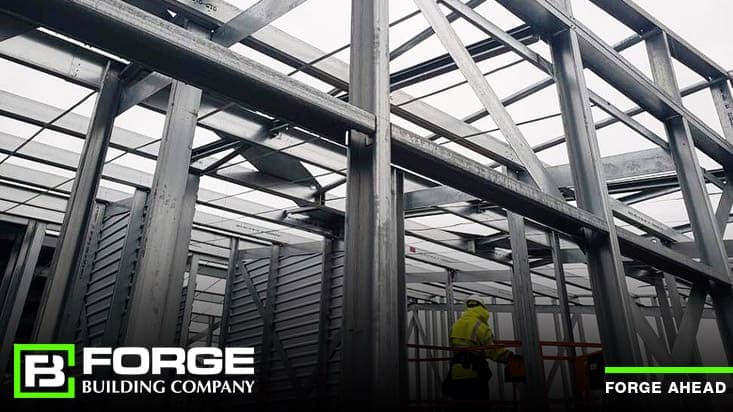
As many people fled to new cities during the pandemic, they kept their stuff in self-storage facilities. Thus, the global self-storage development pipeline has continued to be extremely dynamic.
That being said, many states have enacted new self storage industry laws and regulations from employment to rental contracts that went into place on January 1, 2022.
For example, Senate Bill 101 (SB 101) was signed into law, which will allow self-storage operators to advertise lien sales on online-auction websites instead of in a newspaper of general circulation. The measure also updates rental-agreement requirements regarding delinquency notifications. Many other states have followed suit.
Self-storage rental agreements now must request that tenants provide two email addresses and a mobile number. Facility operators must also inform clients, either within the rental agreement or via verified mail, of the company’s right to enforce a lien. If this information is included in the lease, it must be in bold type at least 12 points in size, and the client must initial next to the language when signing. If delivered by mail, the information must also be sent via email and text message.
When notifying delinquent tenants of an active lien, self-storage operators must send written notices via verified mail to the last known physical address on the rental agreement as well as by email (primary and secondary addresses) and text message, if provided on the lease.
Operators can still advertise a lien sale 10 days after notification is mailed to the tenant or at least 10 days after the payment deadline has passed, whichever is later. Though that timeframe didn’t change in the updated law, operators must wait 30 days to begin lien enforcement if the notice of lien rights was sent to the tenant via mail instead of included and acknowledged in the rental agreement.
The national Self Storage Association (SSA) recommended that all operators update their rental contract. The bill was supported by the SSA and the Louisiana Self Storge Association, which lobbied to eliminate the newspaper-advertising requirement.
 Keeping current with employment laws is challenging but critical for all business owners. Self-storage operations, like all other businesses, have an obligation to comply with state and federal laws that apply to the hiring, work, and termination of employees. Lawsuits are filed every day against owners who believe they’re acting properly in regard to their staff, only to find out certain laws have changed, and they failed to update their systems accordingly. Following are six important areas you should review to ensure you’re current with employment legislation.
Keeping current with employment laws is challenging but critical for all business owners. Self-storage operations, like all other businesses, have an obligation to comply with state and federal laws that apply to the hiring, work, and termination of employees. Lawsuits are filed every day against owners who believe they’re acting properly in regard to their staff, only to find out certain laws have changed, and they failed to update their systems accordingly. Following are six important areas you should review to ensure you’re current with employment legislation.
The federal minimum wage was recently raised for the first time since 2009. As a result, many states have taken steps to increase their own minimum-wage requirements, causing uncertainty for multi-state self-storage operators as to the proper wage for employees. It’s essential to confirm you’re paying above the minimum at each facility location.
More than 27 states have increased their minimum wage since 2014. Many of those states have even created an “index” for annual inflation, thereby increasing the wage automatically each year over the next few years. In addition, more than 44 localities (cities and counties) have increased minimum wage above the state minimum.
One of the most difficult issues for self-storage owners is exemption. Many pay their facility managers an hourly wage rather than an annual salary. This means staff are non-exempt and must be paid for overtime. In general, they’re entitled to time and a half for hours over 40 worked per week. You must know your wage requirements for the states in which you operate and track your staff hours to ensure proper compensation.
An ongoing challenge in the self-storage industry is how to address hours worked by managers who live on site. Although the practice of hiring of resident managers is diminishing, there are still properties with manager apartments.
The initial idea behind resident management was to offer clients (and owners) a sense of security and a higher level of service. But with the “live where you work” approach comes the risk that employers and employees have a different understanding of “work hours.” This issue isn’t unique to self-storage and has been addressed by the U.S. Department of Labor (DOL). It also arises with apartment managers, firefighters, and other positions in which the employee resides at the workplace.
The DOL has relied on the law found in the Code of Federal Regulations (CFR), specifically 29 CFR 785.23, titled “Employees residing on employer's premises or working at home.” Based on this rule, storage owners can set guidelines with their employees to hopefully avoid any later dispute over hours to be worked and work to be performed.
Under the U.S. Immigration Reform Act, all employers must have a valid and complete Form I-9, Employment Eligibility Verification, for each employee, citizen or noncitizen. The employee must attest to and provide proof of his identity, though the documentation to prove it can vary. There’s a list of acceptable documents on the form, and an employer can’t limit what he’ll accept as proof.
Employees must complete their I-9 no later than their first day of work. Employers must complete their part of the form no later than the employee’s third day of work. They must then retain all forms until the later of three years after the employee began work or one year after he was terminated. The documents can be stored electronically and needn’t be kept in the original format.
An employer can be found to have violated immigration laws if he fails to verify the identity and eligibility of a new employee through the use of an I-9. Fines for violations, depending on the number of employees involved, can range into tens of thousands of dollars, especially for those who knowingly fail to obtain the forms as required. Criminal prosecution is also possible for repeat and flagrant offenders. U.S. Immigration and Customs Enforcement can consider its penalties based on the size of the business, the good faith effort to comply, the seriousness of the violation, whether the violation involved undocumented workers, and the history of previous violations.
 Unique changes in employment laws in California, Illinois and New York provide guidance as to women’s rights in the workplace. In New York City, all employers with 15 or more employees in are required to conduct annual anti-sexual-harassment training for all staff. Similarly, California has amended its state law to require all employers with more than five employees to provide anti-harassment training to staff, with additional training for all supervisors.
Unique changes in employment laws in California, Illinois and New York provide guidance as to women’s rights in the workplace. In New York City, all employers with 15 or more employees in are required to conduct annual anti-sexual-harassment training for all staff. Similarly, California has amended its state law to require all employers with more than five employees to provide anti-harassment training to staff, with additional training for all supervisors.
Additionally, the California law was amended to disallow any settlement agreements that would prohibit the disclosure of the underlying sexual-harassment claim. In other words, the law would void any agreement where a person was required to forfeit his rights to disclose the unlawful acts that occurred in the workplace.
At Forge, we are happy to be employing many women executives who are spearheading the industry movement in the world of construction. For our position on this topic, see women in construction
Sexual harassment is a form of sex discrimination as outlined under Title VII of the Civil Rights Act of 1964. There are two recognized forms. The first is a type of “quid pro quo” scenario in which a supervisor demands a subordinate tolerate harassment as a condition of keeping his job (or tenancy). The second is the existence of a hostile or abusive work environment where conduct can be verbal or physical, is frequent, and is improperly tolerated.
From a legal perspective, the discussion should be about workplace education and training as well as proper procedures for reporting claims and managing the investigation and discipline regarding such claims. The business liability exposure is such that the company as well as the perpetrator can be liable, depending on what the company knew about the conduct and what it did to stop the harassment.
Companies must have a sexual-harassment policy in place, no matter their size. Though only companies with 15 or more employees are subject to the federal laws for Title VII claims, smaller companies may still be held liable under applicable state laws. There must be sufficient training related to sexual harassment, so employees can be educated about proper behavior in the workplace as well as the procedures in place in case an incident occurs.
Two recent topics have led business operators to update their employee handbooks. The first is the use of social media; the second is driving while using a cellphone.
Employers are subject to potential liability if their employees, acting under the scope of their employment, post negative social media statements against other employees, clients, or the company itself. Certainly, employers can be even held liable if their employees, to impact competition, post false or fake reviews to impact business. To combat these risks, employers should update their policy handbooks to address employee behavior on social media. These policies should outline how staff are to conduct themselves online and the risk of discipline and possible termination for the violation of these rules.
Similarly, employers can be held liable for injuries that arise as a result of the employee’s violation of the law while driving and using a mobile phone during working hours. Now that more states have enacted “hands-free” laws, an employee must understand the applicable laws and recognize they’re subject to discipline if not termination for any infractions while driving within the scope of work (visiting clients, running facility errands, etc.).
One of the trickiest arts of running a self-storage business is having staff. Today, self-storage owners need to pay attention not only to federal laws, but also to the states and municipalities laws where the business resides. As a self-storage owner, it’s imperative to stay informed on these ever-changing regulations. Liability can be significant in terms of cost to defend and financial exposure to the business.
At Forge, we stay abreast of all state and federal regulations to ensure that our clients get the best-quality, compliant self-storage facilities in their area. For more information on how we can help you, please see Forge Building Company
When you think of a male-dominated industry, construction might be one of the first that comes to mind. According to the U.S. Bureau of Labor Statistics, of all the people working in construction, women comprise only 10.9%. Even smaller is the number of women on the front lines of a job site — only 1 for every 100 employees in the field. Women make up 47% of all employed individuals. This means that the construction industry is only benefitting from about 1.25% of women in the workforce.
There are several factors that explain this enormous gender gap, including unconscious gender bias, a lack of adequate training, and negative perceptions of women working in construction. Despite these barriers, women continue to build their path in the industry. According to Randstad, women in construction management roles increased by 9% in the UK between 2018 and 2020.
As new construction industry jobs are expected to balloon by almost 2 million in 2022, companies are looking to recruit more women than ever before to bring their skill sets into the field. When you think about it, women use the spaces, so they should be building them too.
 Women can take on any role in the construction industry. However, they are currently severely underrepresented in trade and executive positions. Just under 87% of women working in construction hold office positions, and only about 2.5% of tradespeople are women. Women also only make up about 14% of staff executive and 7% of line executive positions.
Women can take on any role in the construction industry. However, they are currently severely underrepresented in trade and executive positions. Just under 87% of women working in construction hold office positions, and only about 2.5% of tradespeople are women. Women also only make up about 14% of staff executive and 7% of line executive positions.
Despite these troubling statistics, many organizations are trying to promote more women into leadership positions. Women working in the industry inspire younger generations to follow in their footsteps.
Although women are still underrepresented in steel building companies, they are making significant progress as leaders in the industry. A substantial portion of women executives and construction managers entered those roles in the last five years. This suggests that companies have more recently promoted women to leadership roles.
Today, 13% of construction firms are owned by women, and 4% of new construction firms were launched by women in 2020. From 2014 to 2019, construction firms with women owners experienced a 64% growth rate, and 9% of women-owned firms achieved revenues greater than $500,000.
To enter a field like construction, women must have access to resources that address their specific needs in the industry. Fortunately, companies and associations are increasing their efforts to promote women within their organizations. They are educating young women about the benefits of working in the industry.
Women’s Organizations. Nationally recognized groups like the National Association of Women in Construction (NAWIC) and Women Construction Owners & Executives USA provide mentorship, marketing and networking opportunities to help women new to the construction industry.
Construction Courses. Construction companies in certain parts of the U.S. collaborate with the local community to offer courses and boot camp programs for young girls and women interested in the industry. Many cities also offer apprenticeship programs that strive to recruit women, prepare them for exams, and train them with job-specific skills.
Construction Forums and Conferences. Several conferences are held to celebrate and discuss the topic of women in construction. These include:
 Although more diverse representation in the construction industry isn’t a reality today, this report by McKinsey & Co. reveals that the most gender-diverse companies are 25% more likely to achieve above-average profitability than companies with less diversity. After a year of industry-wide growth in 2021, hiring more women is an optimal way to capitalize on that expansion.
Although more diverse representation in the construction industry isn’t a reality today, this report by McKinsey & Co. reveals that the most gender-diverse companies are 25% more likely to achieve above-average profitability than companies with less diversity. After a year of industry-wide growth in 2021, hiring more women is an optimal way to capitalize on that expansion.
In fact, that report found that construction companies with more women in executive line roles than staff roles experienced above-average financial performance compared to companies that didn’t. When 30% or more of executive-level positions were filled by women, those companies had a 48% likelihood of outperforming their least diverse competitors.
Although more diversity brings about more success, Randstad found that women executives are more likely to occupy staff roles (14%) than line roles (7%). This is in stark contrast to men in executive roles, with 33% operating as staff executives and 46% as line executives.
There is still much work to be done to include women in construction fully. To increase recruitment and improve retention, companies need to acknowledge and remove gender bias from their work culture, develop training programs, and local mentorship groups specific to women’s needs. They also need to include more women in the hiring process and encourage women to become role models for other women. Schools, colleges, and educational programs need to highlight the value of construction jobs for women and young girls so that they can see the industry as a viable career path.
Other obstacles that need to be dealt with in the construction industry include:
The current labor shortage in the construction industry presents an opportunity to hire even more women in construction jobs. While there have been many advancements in construction technology, many companies are hesitant to embrace them for a variety of reasons, including a staff shortage. Hiring and training women in the IT departments of construction companies can help with the staff shortage and improve companies’ diversity.
Although there are obstacles for women entering construction, diversity is a proven asset in driving profitability and a key component in solving the construction industry’s labor shortage. With more and more groundbreaking women chipping away at gender norms and leveling the playing field, the industry is taking bigger steps to become a more diverse and inclusive space for future generations.
At Forge, we are happy to employ many women executives who are spearheading the industry movement in the construction world.
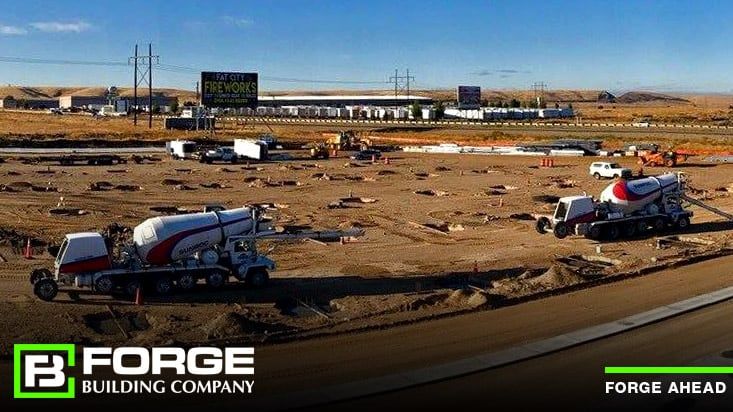 Despite all of the craziness that the pandemic has caused, self-storage development continues its forward momentum—but not without impediments. The cost of raw materials is on the rise, and orders can take longer to ship, plus there are labor shortages. These issues will likely resolve in time, but there’s one obstacle poised to grow still more obtrusive: a lack of suitable sites on which to build. Between market saturation and increasingly restrictive zoning, builders and owners struggle to find suitable parcels to build self storage facilities. It’s a process that’s often taking longer and generating more frustration.
Despite all of the craziness that the pandemic has caused, self-storage development continues its forward momentum—but not without impediments. The cost of raw materials is on the rise, and orders can take longer to ship, plus there are labor shortages. These issues will likely resolve in time, but there’s one obstacle poised to grow still more obtrusive: a lack of suitable sites on which to build. Between market saturation and increasingly restrictive zoning, builders and owners struggle to find suitable parcels to build self storage facilities. It’s a process that’s often taking longer and generating more frustration.
Every self-storage construction project has its own nuances, and it’s never a “one size fits all” when it comes to construction but following are some basic “rules of thumb” to help point you in the right direction.
Additionally, also see our blog post, “Building a Commercial Storage Building” for more insights into understanding development fundamentals.
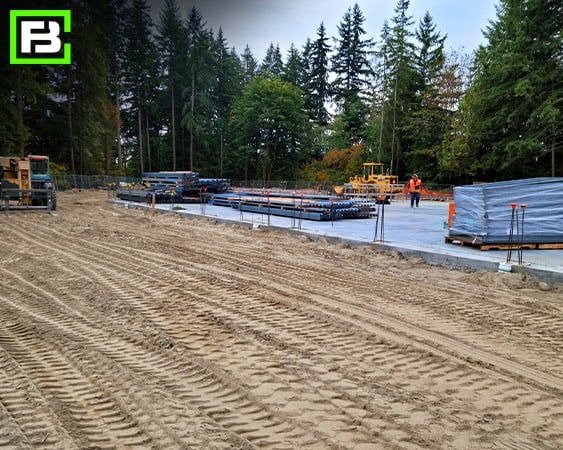
For a sample of the types of single-story self-storage buildings that Forge Building Company offers, please check out: Single-Story Self-Storage Building Contractors
And for more information on costs and location considerations, please see our blog titled “Contractors That Build Commercial Storage Buildings & Facilities.”
Finding a suitable parcel on which to build a self-storage facility with the best steel building contractor will also reap the highest return on investment and get your 2022 off to a great year.
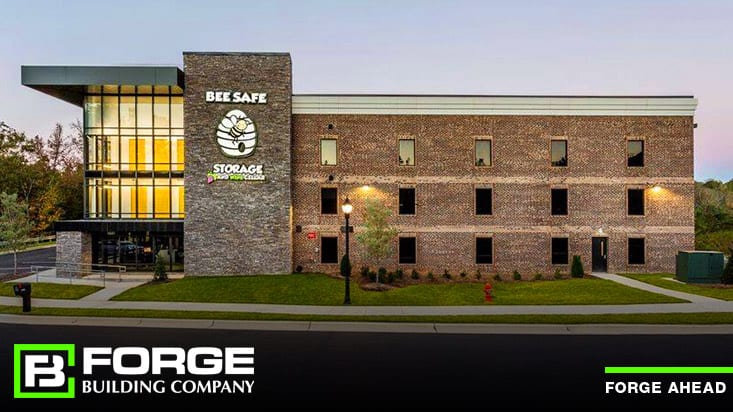
Recent thefts at high-end retailers are a good reminder that the holiday season can bring about more criminal activity. Make sure you are protecting your self-storage business from being vulnerable.
About a month ago, a Nordstrom department store in Walnut Creek, California was ransacked in what police are calling an “organized theft.” Anyone who may have seen the footage would agree that this was a well-planned, coordinated crime. Around 9 p.m. on a Saturday, the thieves entered the store, grabbed merchandise, and fled to their vehicles, which were parked haphazardly just outside the store, crowding the street. Two employees were assaulted, and another was doused with pepper-spray. Some arrests have been made, and police are still investigating.
What’s scary about this whole incident is the possibility that it might not be isolated, and how it clearly demonstrates what lengths people are willing to go to get what they want. While this may not happen at a self-storage facility, it’s a great reminder that all and any business is susceptible to theft.
The first thing to think about is, “How’s your security?” Many facilities with video and other security measures are experiencing break-ins. It’s not enough to add security and expect it to insulate your business from crime. You must also look for other creative ways to prevent it every day.
Components that can help include:
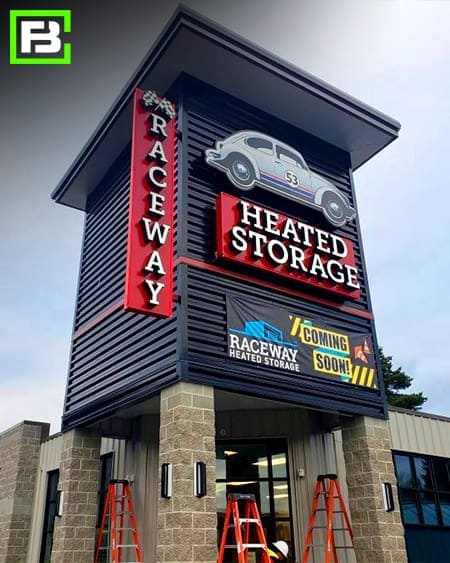 In addition to break-ins, there are a host of other problems that could wreak havoc on your business. Read this blog from a storage operator who dealt with vagrants hanging around and causing damage. Criminal activity increases during this time of year, so be on guard.
In addition to break-ins, there are a host of other problems that could wreak havoc on your business. Read this blog from a storage operator who dealt with vagrants hanging around and causing damage. Criminal activity increases during this time of year, so be on guard.
Besides having a solid security system, it is also important to walk around your property frequently and look for things that might seem out of place. For example, examine unit locks and keypads for tampering and encourage your tenants to report any unusual activity or events. Keep an eye on your security cameras as people move about your property. Make yourself present so everyone knows you’re keeping an eye on the facility. For clients of Forge, we conduct three daily walk-throughs to audit locks and doors, inspecting visual signs for any potential problems. We offer this service to our new and existing self-storage clients.
While it is key to keep your facility at a good occupancy level, that doesn’t mean you should ever let your guard down. When someone comes in to lease a unit, make sure you are following all protocols, checking identification and asking questions. Questionable people don’t like questions. They offer vague answers and might not look you in the eye. If their identification doesn’t check out, tell them you can’t accept it and don’t be afraid to say “no.” Self-Storage Talk members often share “dodge a bullet” moments when a prospect seems like trouble, and they refuse the rental.
In truth, it’s been a crazy, disastrous couple of years, and many people are desperate, especially at this time of year. Even those who might’ve never considered crimes before could be entertaining the thought. This person could already be a tenant! Or, someone who just drove by your site and thought it might be good for a burglary. Prospect to walk through your door may be casing your business. Don’t leave your facility vulnerable. Your self-storage site might not be Nordstrom, but it’s just as valuable to you.